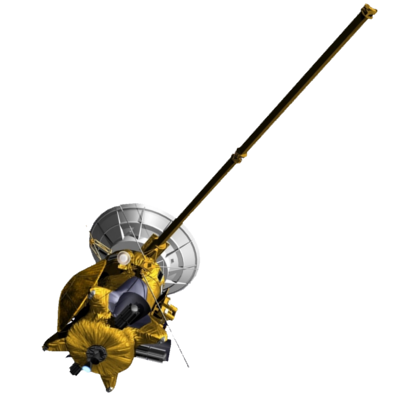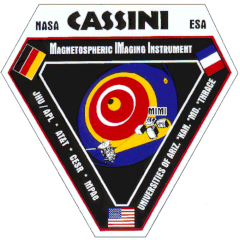Cassini MIMI Investigation at Fundamental Technologies
Historical MIMI Memos and Notes
Suggestions on LEMMS Design
(Memo from Tom Armstrong to S. M. Krimigis, Don Mitchell, and Erhard Kirsch, June 16, 1993)
As an action item from our June 1 meeting, I have undertaken a recalculation and reoptimization of the physical parameter selection for the LEMMS 180 degree end. I report herein the results of my work with the range energy program over the past few days. I took as the guidelines from our discussions at the meeting that:
- High energy protons and electron observation are the most important--especially 2-20 MeV protons and 1-10 MeV electrons. Good, robust measurements should be obtained.
- There is no compelling physical reason to optimize our design for Saturnian x-rays. The source is probably too weak to observe. Thus, in this design I have not considered x-rays at all.
- I have applied the usual parsimony to the design:
- Minimize the number and variety of detectors.
- Minimize the number of thresholds used.
- Reduce weight and complexity.
- I have assumed that ion implant silicon detectors are available in thicknesses of 100 and 700 microns. The stack, as you can see from the listings, is (Foil, 100 micron, 700 micron, 1400 micron--actually paired 700s, and another 700 micron). I have not used any inert absorbing material except the thin foil covering detector D1. It is assumed that detector A follows B in the stack.
- I haven't really looked in detail yet at the electron channels other than to observe that they are free of ions. My range program doesn't know electrons and I haven't had a chance to work this by hand yet. Erhard, can you examine this?
- Mostly the logic is coincidence/anticoincidence logic, and it is important that the stack be as closely adjacent as feasible. Identical detector areas and thin mounts are highly important in this design.
- I believe that this design will also be electronically robust and relatively resistant to problems from noise or pile-up. Generally two-fold coincidence is used. (Yes, there is one four-fold coincidence for A5 to remove proton responses.)
- Species-wise, the design is fairly clean. Correcting the remaining situations (some alphas in low and high energy proton channels, for example) would be complicated and probably not worth the added complexity.
- Final tweaks to this design could be made to even out channel widths and positions--but these are highly constrained. It would be highly advisable in the electronic implementation to be able to set each discriminator separately and precisely.
MIMI LEMMS 180 Degree End Provisional Thickness and Threshold Parameters
| ABSORBER NAME | Foil | D1 | D2 | D3 | B |
| ABSORBER THICKNESSES, MICRONS | 30.0 | 100.0 | 700.0 | 1400.0 | 700.0 |
| ABSORBER MATERIAL | ALUM. | SILICON | SILICON | SILICON | SILICON |
| THICKNESS VARIATION, MICRONS | 0.0 | 10.0 | 10.0 | 10.0 | 10.0 |
| CONICAL HALF ANGLE, DEGREES | 22.5 | 22.5 | 22.5 | 22.5 | 22.5 |
| DETECTOR NOISE, MEV | 0.0 | 0.015 | 0.0 | 0.015 | 0.010 |
| ELECTRONIC NOISE, MEV | 0.0 | 0.0 | 0.0 | 0.0 | 0.0 |
| NUMBER OF THRESHOLDS SET | 0.0 | 7.0 | 6.0 | 5.0 | 3.0 |
| THRESHOLD LEVEL NO.MEV 1 | 0.0 | 0.050 | 0.050 | 0.050 | 0.050 |
| THRESHOLD LEVEL NO.MEV 2 | 0.0 | 0.100 | 0.500 | 0.400 | 0.400 |
| THRESHOLD LEVEL NO.MEV 3 | 0.0 | 3.000 | 3.000 | 3.000 | 4.000 |
| THRESHOLD LEVEL NO.MEV 4 | 0.0 | 0.520 | 5.500 | 6.000 | 0.0 |
| THRESHOLD LEVEL NO.MEV 5 | 0.0 | 1.600 | 12.000 | 16.000 | 0.0 |
| THRESHOLD LEVEL NO.MEV 6 | 0.0 | 3.500 | 40.000 | 0.0 | 0.0 |
| THRESHOLD LEVEL NO.MEV 7 | 0.0 | 13.000 | 0.0 | 0.0 | 0.0 |
| AVERAGE PROJECTED DEPTH, MIC | 31.2 | 104.0 | 727.7 | 1455.4 | 727.7 |
| EST.RMS VARN.PROJ.DEPTH, MIC | 1.2 | 4.1 | 28.8 | 57.7 | 28.8 |
| NET RMS THICKNESS VARN. (MIC) | 1.2 | 10.8 | 30.5 | 58.5 | 30.5 |
| LOWER LIMIT THICKNESS (MIC) | 30.0 | 93.1 | 697.2 | 1396.9 | 697.2 |
| UPPER LIMIT THICKNESS (MIC) | 32.4 | 114.8 | 758.2 | 1513.9 | 758.2 |
| Logic Table for Proton Channels | Logic Table for Alpha and Medium Channels |
 |
 |
*7/8/93 - Eliminate P1 and P2 (covered on the 0º end).
(Fax reply from E. Kirsch, June 22, 1993)
Many thanks for recalculation of the LEMMS ion channels which cover now the most interesting energy ranges very nicely.
I have the following comments:
- In the Canberra catalog I found that fully depleted detectors are only available from 150 μ (=D1) onward.
- I do not know presently whether we can get Al-foils of 30 μ thickness as used in your calculation.
- I would prefer to reduce the conical half angle of the telescope from 22.5º to 15º. Then we could use the old size of the aperture for the Canberra detectors.
- The used detectors and absorbers can be seen on the enclosed figure.
- The present design uses 20 discriminators: 9 proton, 5 α, 3 oxygen, and 3 electron channels are realized.
- For the electron channels I propose the following
logic:
E1 = (D13) · D21 · (D31)~= 0.22 - 0.48 MeV
E2 = (D13) · D21 · D31 · (D41) ~= 0.48 - 1.00 MeV
E3 = (D13) · D21 · D31 · D41 · (C11) ~= 1.0 - 5.0 MeV
E4 = (D13) · D21 · D31 · C11 · (B11) ~= 5.0 - 20.0 MeV(From the opposite end of LEMMS we have a fifth electron channel E = A · B · C = 1.5 - 10.5 MeV). I will try to determine the above listed energy thresholds more precisely by using the energy range-diagrams by Berger et al.
- I found also that the discriminators D11 and B2 are not used for the ion channels. Therefore I propose to realise just one x-ray channel. The signals of the detectors D2, D31+32, D4 could be switched in parallel to a discriminator Dx1 (=30 keV) and we could measure the anticoincidence Dx1 · (Dx2) where Dx2 = 150 keV.
- Thus we use altogether 20 discriminators and realise 22 channels with the High Energy Telescope of LEMMS.
Please let me know your comments.
Return to Historical MIMI Notes and Memos main page.
Return to Cassini
MIMI table of contents page.
Return to Fundamental
Technologies Home Page.
Updated 8/8/19, Cameron Crane
QUICK FACTS
Mission Duration: The Cassini-Huygens mission launched on October 15 1997, and ended on September 15 2017.
Destination: Cassini's destination was Saturn and its moons. The destination of the Huygens Probe's was Saturn's moon Titan.
Orbit: Cassini orbited Saturn for 13 years before diving between its rings and colliding with the planet on September 15th, 2017.



